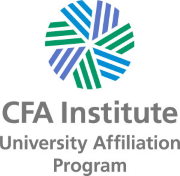Finance Lab
Finance Lab
ΧΡΕΤΡ01
ECTS: 7.5
Course Type: Elective
Semester: Spring
Teaching Hours: 4
Prerequisites:
Course Scope
After completing the teaching cycle of the course, students will be able to:
• Understand the concept of the institutional framework (e.g., supervisory authorities) and its role in a country’s financial system.
• Understand the relationship between democracy and economic growth.
• Understand the causes and economic effects of corruption in a country’s financial system.
• Understand the impact of modern finance on the economy.
• To understand the theory of business cycles.
• Understand the impact of competition policy on economic development.
• Finally, combining all the above, they should be able to understand the motivations, dilemmas and strategic choices of all those involved in the banking system.
Course Outline
• The role of the banking system on the economic development of a country.
• Money supply and demand as well as their connection to the economic development.
• Analysis of the relationship between institutions and the financial system. Case studies of countries (e.g., developed and developing economies) with strong and weak institutions.
• Relationship between democracy and economic growth.
• Analysis of corruption in the financial system and its impact on a country’s economy. Critical thinking and suggestions for dealing with the phenomenon.
• Impact of modern finance on economic growth. Case Study – Cryptocurrencies.
• Introduction to the business cycles theory.
• Business Cycles Synchronization.
• Effect of competition policy on economic development.
Suggested Reading
- Acemoglu, D. and Robinson, J. A. (2013). Why Nations Fail: The Origins of Power, Prosperity, and Poverty. Crown Publishing Group.
- Bahoo, S. (2020). Corruption in banks: A bibliometric review and agenda, Finance Research Letters, 35, 101499.
- Degiannakis, S., Duffy, D. and Filis, G. (2014). Business Cycle Synchronization in EU: A Time-Varying Approach. Scottish Journal of Political Economy, 61 (4), 348-370.
- Gerring, J., Bond, P., Barndt, W. T. and Moreno, C. (2005). Democracy and Economic Growth: A Historical Perspective. World Politics, 57(3), 323–364.
- Mankiw, N.G. (1989). Real Business Cycles: A New Keynesian Perspective. Journal of Economic Perspectives, 3(3), 79-90.
- Miller, S. (2018). The Global Banking Sector: Corruption, Institutional Purpose and Economic Justice. Business & Professional Ethics Journal, 37(1), 13–44.
- Papaioannou, E. and Siourounis, G. (2008). Democratisation and Growth. The Economic Journal, 118(532), 1520–1551.
- Przeworski, A., Alvarez, M. E., Cheibub, J. A. and Limongi, F. (2000). Democracy and Development: Political Institutions and Well-Being in the World, 1950–1990. Cambridge University Press.
- Shy, O. (2001). The Economics of Network Industries. Cambridge University Press.




